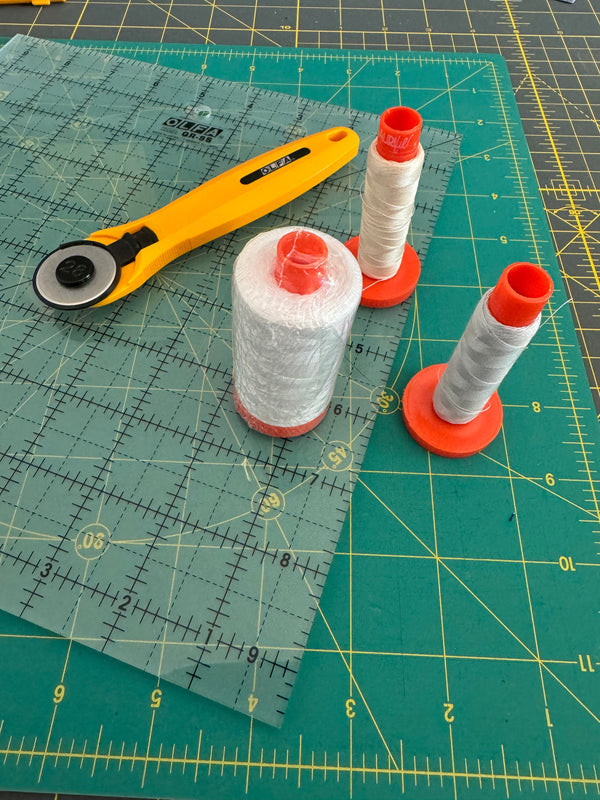
Budget Minded Thread Tips

Raise your hand if you love to save money on the basics so you can buy more fabric! While costs seem to go up and up, here’s one way you can control them – try these thrifty tricks for conserving thread.
Chain piece whenever you sew fabric pairs together. You can use this method any time you have a lot of units to sew, such as squares, half-square triangles, or other pieces where you have multiples to stitch together. Instead of stitching each unit individually, cutting thread at the end of each one, chain piecing allows you to continue sewing the pieces without wasting thread. Begin by sewing your first unit, then butt up the next unit so that there are only a few stitches between each piece. When you’re done, you’ll have a ‘chain’ of individual units. Snip the thread in between each one and you’re ready to press. Not only does this method save thread, it saves time, too! Bonus!!

Strip piece simple quilting units. Imagine you are sewing four-patch units together. Instead of sewing each four-patch individually, cut two strips the width you need X the width of the fabric. With right sides together, stitch the length of each strip. Press to the dark. Now, go to your cutting mat and subcut the sewn strips into the width you need them for your four-patch blocks. Put the cut units into the four-patch block arrangement and sew together. Not only have you saved thread – twice if you sew the blocks together using the chain piecing method – you’ll have more accurate blocks when you’re finished.
If you’re tired of your thread becoming clumped up under your fabric when you start to sew a seam, you need to try using a leader and ender. The ‘leader’ is a small, doubled piece of scrap fabric that you put under your needle before you start your seam. Stitch across it and then add your fabric unit, much like chain piecing. The ‘ender’ is a scrap that you sew across at the end of the seam. It becomes the leader when you begin your next seam. Keep a small stack of scraps handy by your machine. The advantage is that you won’t have a bird’s nest of thread to rip out and waste and your seam will be more accurate. Some quilters like to take this method a step further and cut their scraps into squares and sew into units, making a scrappy quilt when they get enough. That saves both thread and fabric!
Buy the largest spool of thread you can afford. Economically, a larger spool is less expensive than a bunch of smaller spools, especially if you use the same color of thread repeatedly. You’ll be able to wind multiple bobbins at once, and you won’t have to change your thread as often. You can waste a lot of thread changing spools. If you are able to purchase your thread on sale, that’s an extra win!
To quote Benjamin Franklin, “A penny saved is a penny earned”. Imagine how many pennies you’ll be saving when you follow these thread tips!


